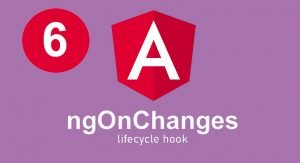Jumping into Angular can look quite intimidating if you’re new to it. But once you get into it, it’s not that bad. In this guide, you’ll discover what Angular is, how you can get it installed and running, and how to start building things with it.
You’ll learn the fundamentals of components, templates, and services. At the end, you’ll be able to throw together a basic app and have it up and running. Getting Started with Angular positions you to build fast and capable web applications that run great in any browser.
What is Angular and Why Use It
Angular is a JavaScript framework built by Google. It’s used to create web apps, especially single-page applications. That means users can move between pages without the site reloading. It’s good for big websites that need to be fast.
Many companies use Angular. Google uses it. So do Microsoft and Forbes. It works well for dashboards, admin panels, and apps that need a lot of features. Angular is also updated often, so it keeps getting better.
Read More About : How to Build a Full Angular App with Bootstrap?
Angular Architecture
The architecture of Angular is made up of different parts that work together. The main parts are components, modules, templates, and services. Each one has a job.
A component controls one part of the screen. A module brings related components together. A template controls how things look. A service shares logic or data between components. Angular also uses dependency injection, which makes it easier to manage services across the app.
Here’s a simple table showing each part:
| Angular Element | Role in App |
| Component | Handles the design and logic |
| Module | Group features and components |
| Template | Shows what the user sees |
| Service | Shares logic and data between parts |
Installing Angular Tools
To begin, you need to install Node.js and npm. These let you use Angular’s tools. After that, you install the Angular CLI, which stands for Command Line Interface. It helps you create, run, and manage Angular apps.
Once the CLI is installed, you can create a new Angular project. The command sets up all the files and folders you need to start building. You can then serve your app in the browser and begin coding.
Project Structure in Angular
An Angular project has many files and folders. At first, it may seem confusing, but every part has a purpose. Most of your code goes into the folder called src/app.
In this folder, you’ll find your main components, styles, and logic. There are also files for configuration, like angular.json, package.json, and tsconfig.json. These manage your settings, dependencies, and how your code is built.
Here’s a table that explains some of the main files:
| File or Folder | Purpose of the File |
| src/app | Holds your code and components |
| angular.json | Manages project configuration |
| package.json | Lists the packages your app uses |
| app.component.ts | Main component shown on screen |
Creating Your First Component
A component in Angular is a small part of your app. It could be a header, a button, or even a full page. Each component has its design, logic, and styles. You create components using the CLI, and Angular connects them automatically.
Each component has a TypeScript file for logic, a CSS file for style, and a template for layout. This makes it easy to build apps that are well-organized and easy to change later.
Templates and Data Binding
Templates show the layout of your app. With data binding, you can link your data to what users see on the screen. Angular supports many types of binding.
One-way binding lets you show data. Two-way binding lets users change the data. You can also use property binding and event binding to control user actions. This helps make your app dynamic and interactive.
Services in Angular
A service is a way to write shared logic or connect to a database. Instead of writing everything in components, you move common tasks to services. This makes your code cleaner and easier to manage.
Services are injected into components using Angular’s dependency injection system. This lets multiple parts of your app use the same service, like for sharing user data or connecting to an API.
Making API Calls
To get data from a server, you use Angular’s HttpClient. This tool lets your app make HTTP requests. You first import it into your app and then use it in services to get or send data.
Data from the server comes in something called an observable. You subscribe to the observable to get the result. This makes it easy to work with data that might take a second to load.
Routing in Angular
Routing lets you build an app with many pages, but without full reloads. This makes your app faster. You create routes by setting paths that point to components.
To show the page content, you use a router outlet. You can also pass values in the route and protect routes using guards. Angular’s router is powerful and gives users a smooth experience.
You Will Like : Angular Working with JavaScript Modules
Forms in Angular
Angular supports two types of forms: template-driven and reactive. Template-driven forms are simple and use HTML. Reactive forms use more code and give more control.
Forms let you collect user input. You can also validate data, show errors, and handle form submissions. Here’s a quick comparison:
| Feature | Template-Driven | Reactive |
| Setup Style | HTML | TypeScript |
| Best Use Case | Small Forms | Complex Forms |
| Control Level | Low | High |
Lifecycle Hooks
Every component in Angular goes through lifecycle stages. These are called hooks. The most common one is ngOnInit, which runs when the component loads.
There are others too, like ngOnChanges and ngOnDestroy. These hooks help you manage when to run code, such as loading data or clearing memory.
Styling Angular Apps
You can style Angular apps with CSS or SCSS. Each component has its own style file. This makes it easy to control how each part looks without affecting other parts.
Angular also supports style encapsulation. That means styles are kept private to each component. You can also use global styles. Many developers also use Angular Material to make clean, modern interfaces fast.
Building Your App for Production
When your app is ready, you build it for users. This process makes your app smaller and faster. It removes things you don’t need and compiles the code.
After building, you’ll get a folder with the final files. These files can be uploaded to a web server or hosting service. Always test your app before going live to catch any bugs.
Deployment Options
There are many ways to put your app online. You can use Firebase, Netlify, or GitHub Pages. These services let you host your Angular app easily.
You just upload your build folder. Some tools even let you connect your code and deploy automatically when you make changes. This is called CI/CD, and it’s useful for teams and ongoing projects.
Helpful Angular Tools
Many tools make Angular development easier. Use Visual Studio Code with extensions like Prettier or Angular Language Service. These help you write better code.
Use Augury to inspect how your app works. You can also try Storybook to design and test UI components. These tools save time and help you catch mistakes early.
Fixing Common Errors
Even skilled developers run into problems. Sometimes the data doesn’t show up. Other times, Angular gives confusing errors. One common error is ExpressionChangedAfterItHasBeenCheckedError.
To fix problems, read the console messages and look at what changed. Check your code for missing imports or wrong paths. Most issues come from simple mistakes that are easy to fix.
What to Learn Next
Once you’re done with the basics, try building a real app. Start small, like a task list or a notes app. Then, explore new topics like NgRx for state management or advanced routing.
You can find great courses online, read official docs, or join forums. The Angular community is big and helpful. Keep learning, and you’ll become an expert faster than you think.
FAQ” S
What is Angular mainly used for?
Angular is used to build web apps, especially fast and complex single-page applications.
Is Angular good for beginners?
Yes. It may seem hard at first, but with practice, it becomes easy. This guide helps you start.
Can I use Angular with any backend?
Yes. Angular works well with any backend like Node.js, PHP, or Python, as long as it provides an API.
What makes Angular different from React or Vue?
Angular is a full framework with built-in tools. React and Vue are more flexible but need extra libraries.
How long does it take to learn Angular?
You can learn the basics in a few weeks. Mastery takes longer but grows with practice.
Conclusion
Getting Started with Angular gives you the keys to build fast, strong, and modern web apps. It teaches you how to set up projects, use components, connect services, and go live with your app. Angular is a powerful tool. Once you understand its core ideas, you can build anything you imagine. Keep practicing, build small projects, and dive deeper as you go. The more you use Angular, the more confident you will become.





Pingback: uibmodal - Angular